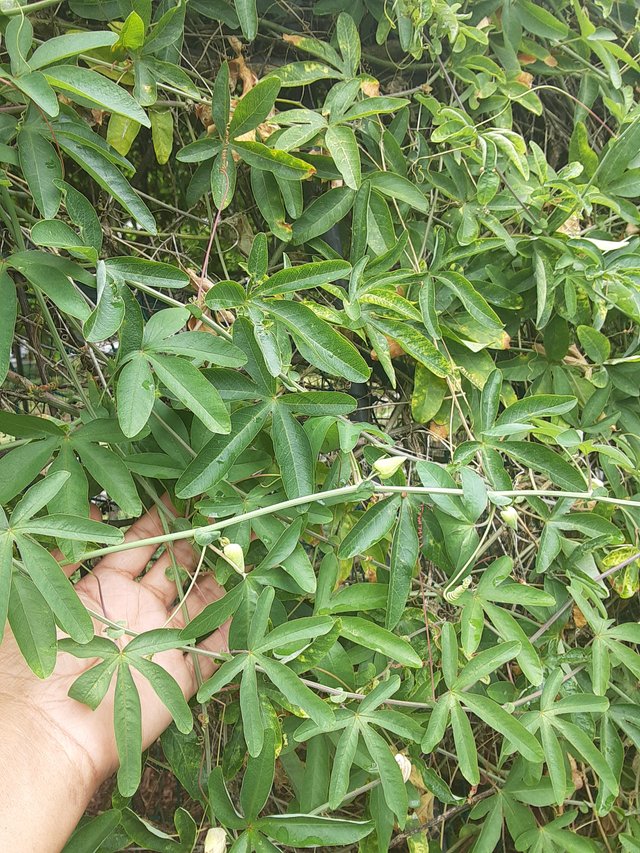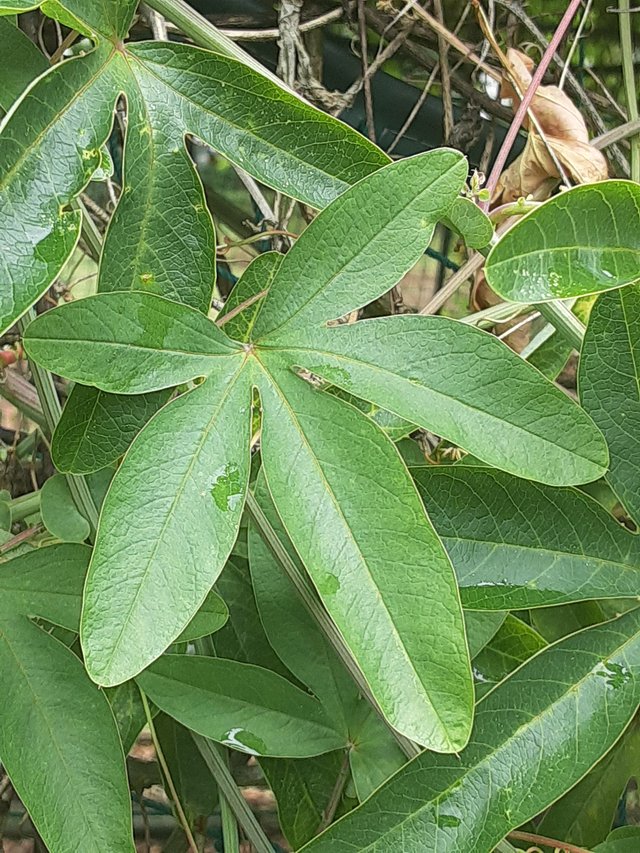The blue passionflower, a vine with lobed leaves and striking flowers, known for its ornamental value and potential medicinal properties

Passiflora caerulea, commonly known as the blue passionflower or common passionflower, is a captivating vine native to South America. This plant is renowned for its striking flowers, which are a complex blend of colors and shapes, often featuring shades of blue, white, purple, and yellow.
One of the most distinctive features of the blue passionflower is its leaves. These are palmately lobed, meaning they are divided into several segments that radiate from a central point. The lobes can vary in number, with five being the most common, but three, seven, or even nine lobes are also possible. The leaves are typically green, but they can sometimes have a bluish hue.
The edges of the leaves are smooth and entire, without any teeth or indentations. The base of each leaf bears a tendril, a slender, twisting structure that allows the vine to climb and cling to supports. This tendril is essential for the plant's growth and survival in its natural habitat.

The leaves of the blue passionflower are not only aesthetically pleasing but also play a vital role in the plant's overall health. They are responsible for photosynthesis, the process by which the plant converts sunlight into energy. The leaves also help to regulate the plant's water balance and protect it from pests and diseases.
In addition to their ornamental value, the leaves of the blue passionflower have been used for medicinal purposes in traditional cultures. Some people believe that the leaves contain compounds that can help to reduce anxiety and promote relaxation. However, more research is needed to confirm these claims.
Ref.:
 |  |
Upvoted! Thank you for supporting witness @jswit.
@tipu curate